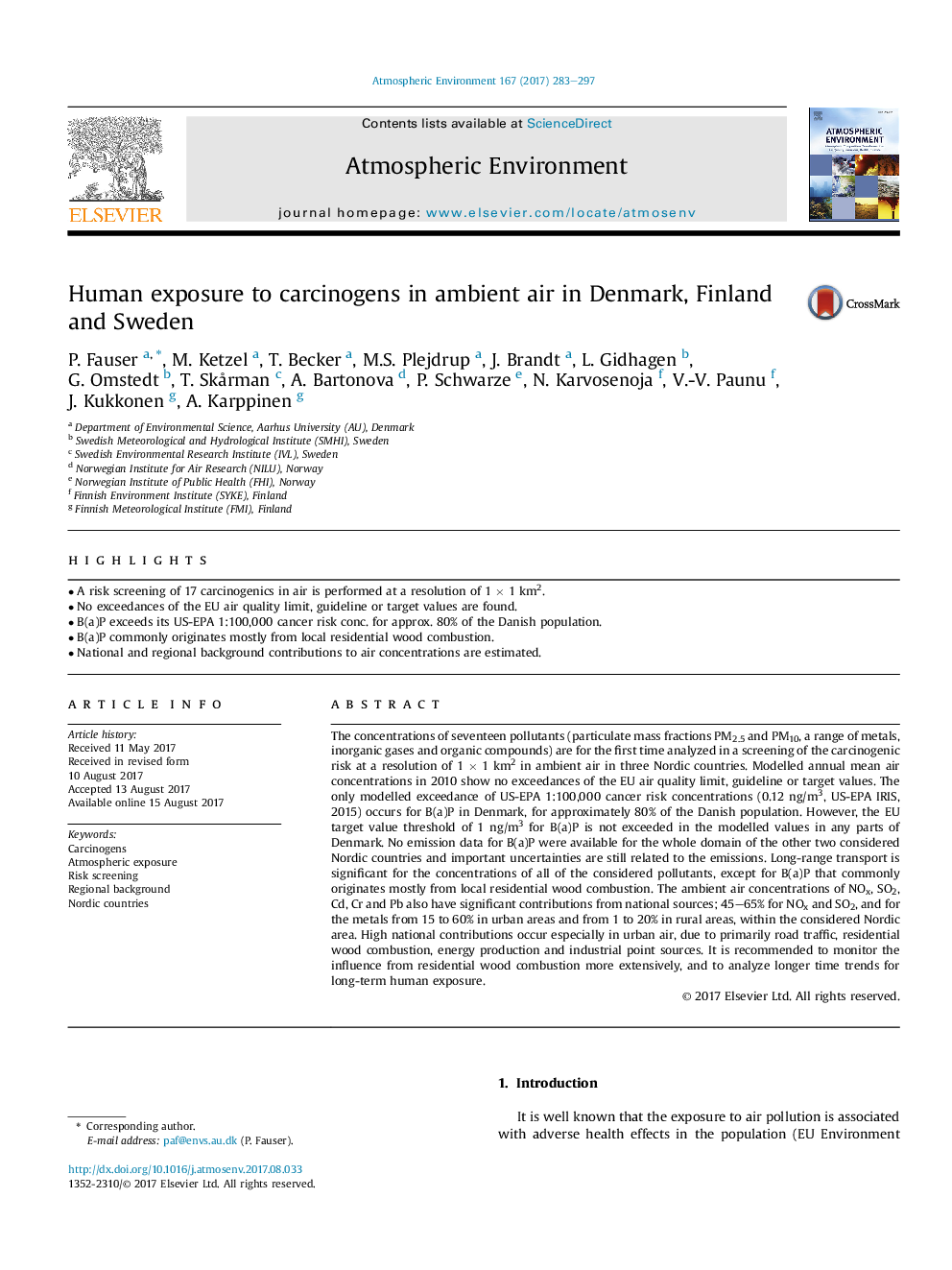| Article ID | Journal | Published Year | Pages | File Type |
|---|---|---|---|---|
| 5753070 | Atmospheric Environment | 2017 | 15 Pages |
Abstract
The concentrations of seventeen pollutants (particulate mass fractions PM2.5 and PM10, a range of metals, inorganic gases and organic compounds) are for the first time analyzed in a screening of the carcinogenic risk at a resolution of 1Â ÃÂ 1 km2 in ambient air in three Nordic countries. Modelled annual mean air concentrations in 2010 show no exceedances of the EU air quality limit, guideline or target values. The only modelled exceedance of US-EPA 1:100,000 cancer risk concentrations (0.12Â ng/m3, US-EPA IRIS, 2015) occurs for B(a)P in Denmark, for approximately 80% of the Danish population. However, the EU target value threshold of 1Â ng/m3 for B(a)P is not exceeded in the modelled values in any parts of Denmark. No emission data for B(a)P were available for the whole domain of the other two considered Nordic countries and important uncertainties are still related to the emissions. Long-range transport is significant for the concentrations of all of the considered pollutants, except for B(a)P that commonly originates mostly from local residential wood combustion. The ambient air concentrations of NOx, SO2, Cd, Cr and Pb also have significant contributions from national sources; 45-65% for NOx and SO2, and for the metals from 15 to 60% in urban areas and from 1 to 20% in rural areas, within the considered Nordic area. High national contributions occur especially in urban air, due to primarily road traffic, residential wood combustion, energy production and industrial point sources. It is recommended to monitor the influence from residential wood combustion more extensively, and to analyze longer time trends for long-term human exposure.
Related Topics
Physical Sciences and Engineering
Earth and Planetary Sciences
Atmospheric Science
Authors
P. Fauser, M. Ketzel, T. Becker, M.S. Plejdrup, J. Brandt, L. Gidhagen, G. Omstedt, T. Skårman, A. Bartonova, P. Schwarze, N. Karvosenoja, V.-V. Paunu, J. Kukkonen, A. Karppinen,
